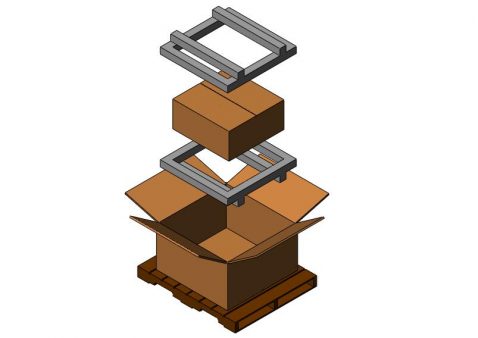Plastic Container Manufacturer Excellence: Crafting Solutions for You
Wiki Article
Reliable Industrial Recycling Solutions for Sustainable Product Packaging: A Comprehensive Overview
In today's significantly environmentally-conscious world, the need for lasting product packaging remedies has actually never been greater. To satisfy this demand, businesses across sectors are actively seeking reliable industrial recycling solutions. Nonetheless, navigating the complicated landscape of sustainable product packaging can be challenging without a comprehensive guide. That's where this comprehensive overview on effective commercial recycling options for sustainable product packaging comes in. By exploring key areas such as packaging material selection, designing for recyclability, implementing recycling infrastructure, teaming up with recycling companions, and tracking and measuring reusing success, this overview will outfit you with the knowledge and devices necessary to make enlightened decisions and drive positive change within your company. Whether you're a packaging professional, sustainability supervisor, or merely curious about the topic, this guide will give beneficial understandings and methods to assist you navigate the world of lasting packaging.Product Packaging Material Choice
The choice of product packaging materials plays an important role in guaranteeing the sustainability of industrial reusing remedies. The option of materials is essential in lessening ecological impact and taking full advantage of recycling efficiency when it comes to sustainable packaging. Picking the best products can help in reducing waste generation, save sources, and advertise a round economic situation.Materials like cardboard, paper, glass, and certain kinds of plastics can be recycled numerous times without losing their quality. On the other hand, products that are difficult to recycle, such as blended plastics or non-recyclable composites, can produce difficulties for the recycling procedure and may finish up in burners or landfills.
Another factor to consider is the use of biodegradable and renewable products. Packaging made from sustainable sources, such as plant-based plastics or biopolymers, can help in reducing dependency on nonrenewable fuel sources and mitigate environment adjustment. In addition, eco-friendly products break down normally with time, minimizing the build-up of waste in garbage dumps.
Furthermore, the weight and quantity of product packaging products ought to be lessened to lower transportation costs and energy usage. Light-weight materials not only need fewer sources during production however additionally add to reduce carbon exhausts throughout transport.
Designing for Recyclability
Packaging designers should focus on the usage of products that are widely accepted for reusing and have actually established reusing facilities. Materials such as glass, aluminum, and particular types of plastic, like Animal and HDPE, are frequently recycled and should be preferred over products that are hard or pricey to reuse.One more crucial factor to consider in making for recyclability is the removal of unnecessary components or materials. By decreasing the number of layers, coatings, and added elements, packaging can be made less complex and much easier to recycle. In addition, designers should intend to minimize using combined materials, as they can complicate the reusing procedure.

Implementing Recycling Framework
Efficient application of reusing infrastructure is important for the success of industrial reusing remedies. Without appropriate infrastructure in position, the recycling procedure becomes inefficient and inadequate, impeding the total goal of lasting product packaging.To implement reusing infrastructure successfully, several essential variables require to be taken into consideration. There should be a well-organized collection system that assists in the splitting up and collection of recyclable products. This can include assigned reusing bins in public areas, as well as collaborations with waste management companies for curbside pick-up and sorting.
As soon as collected, the recyclable materials need to be transferred to reusing centers in a prompt fashion. This requires effective logistics and transport networks, ensuring that the materials get to the ideal centers without delay.
At the reusing facilities, advanced sorting and processing modern technologies ought to be in place to separate different types of materials efficiently. This includes the use of automated sorting equipments, optical scanners, and hand-operated sorting methods.
In addition, there need to be a durable market need for recycled products. This can be achieved with cooperations with producers and markets that utilize recycled materials in their imp source production processes. Creating a secure market for recycled products incentivizes the recycling market and promotes the circular economy.
Collaborating With Recycling Partners

One trick facet of working together with reusing companions is the establishment of clear communication networks. It is very important to develop open lines of communication to assist in the exchange of info, updates, and responses. This allows both parties to stay informed concerning the progression of reusing campaigns and attend to any type of challenges or concerns that may arise.
Additionally, partnership can involve collaborations in making and carrying out recycling programs. Reusing partners can provide useful insights and assistance in creating reliable collection systems and establishing the most appropriate recycling innovations. By collaborating, businesses and reusing partners can optimize the recycling procedure and reduce waste.
In addition, partnership can expand past the operational elements of recycling. It Going Here can additionally incorporate campaigning for and education efforts. By signing up with pressures, companies and reusing partners can increase understanding regarding the importance of reusing and promote the fostering of lasting packaging techniques among customers and various other stakeholders.
Tracking and Measuring Recycling Success
To guarantee the effectiveness of industrial recycling remedies and the accomplishment of lasting product packaging goals, it is vital for companies and their reusing companions to develop an extensive system for tracking and determining reusing success (bulk container recycling). Tracking and gauging reusing success permits services to assess the influence of their reusing efforts, identify areas for enhancement, and set purposeful targets for future progressOne way to track recycling success is with making use of data collection and evaluation devices. By gathering information on the quantity of packaging waste produced, the percentage of waste that is recycled, and the sorts of products being reused, organizations can acquire useful understandings right into their recycling efficiency. This information can after that be assessed to identify fads, patterns, and areas of inadequacy.
An additional important facet of tracking and gauging reusing success is developing standard and clear metrics. This my site allows companies to contrast their performance against market criteria and track their progress with time. Metrics such as recycling rates, waste diversion prices, and greenhouse gas exhausts can provide a measurable action of a service's recycling success.

Conclusion
To conclude, applying efficient commercial recycling services for sustainable product packaging requires careful consideration of packaging material option, designing for recyclability, carrying out recycling facilities, collaborating with recycling companions, and tracking and determining reusing success. By including these methods, businesses can contribute to a more environmentally-friendly and lasting strategy to packaging, lowering waste and promoting the round economic climate.By discovering essential areas such as packaging material choice, designing for recyclability, implementing reusing infrastructure, teaming up with recycling companions, and monitoring and determining reusing success, this guide will certainly furnish you with the expertise and devices necessary to make informed decisions and drive favorable modification within your organization. Packaging designers should focus on the usage of products that are widely approved for reusing and have actually established reusing facilities.Partnership with reusing partners is important for the successful execution of commercial reusing options and the accomplishment of lasting packaging objectives. By signing up with pressures, companies and reusing partners can increase understanding regarding the importance of recycling and advertise the fostering of sustainable product packaging techniques among consumers and various other stakeholders.
By collecting data on the quantity of packaging waste generated, the percentage of waste that is recycled, and the kinds of products being reused, businesses can obtain valuable understandings right into their reusing performance.
Report this wiki page